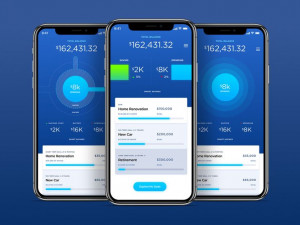
Designing a Money Management App Like Mint
 With the global pandemic making wallets shrink and impulse buying promoted all-around, people need means to control their spending. That’s why the demand for money management apps is growing, and the personal finance software market size is expected to reach 1,69 billion US dollars. So, here are some tips on how to jump into this train with your own Mint-like app. Also, read this to discover more:https://agilie.com/blog/How-To-Build-A-Money-Management-App-Like-Mint
With the global pandemic making wallets shrink and impulse buying promoted all-around, people need means to control their spending. That’s why the demand for money management apps is growing, and the personal finance software market size is expected to reach 1,69 billion US dollars. So, here are some tips on how to jump into this train with your own Mint-like app. Also, read this to discover more:https://agilie.com/blog/How-To-Build-A-Money-Management-App-Like-Mint
Global Personal Finance Software Market
To succeed, one must first know the game he/she is playing, so let’s start with the market. In 2019, personal finance software generated 0,94 billion US dollars in revenue worldwide. Web-based applications are still a dominating segment because of anti-malware features, but mobile app share is expected to grow thanks to the ever-growing number of smartphone users.
In terms of geography, North America is expected to remain a prime segment as it is already populated with large players, and new technology is accepted fast here. Asia-Pacific is expected to show rapid growth because of the rapid development of the IT industry there.
Money management apps differ in complexity, features, and problems they solve. They can be divided into two primary categories:
- Basic fintech apps.Such apps offer very simple functionality where users manually input their income and spending and get a segmented view of their spending structure and some general tips on improving it. Some may call those glorified calculators, but they can still be pretty useful in addition to mostly being free to use.
- Advanced fintech apps.With these apps, you integrate your bank account into them to allow the app to collect transaction data automatically. Besides, it has advanced smart budgeting functionality, AI-driven advice, and more.
If your primary goal is to develop a Mint-like app, you should go for the second type. You’ll need bank integration and smart features to compete with Mint. Also, more complex apps open more possibilities for monetizing through premium plans and paid add-ons.
Breaking Down the Mint
Mint has become an industry standard because of its intuitive interface and easy automation. Let’s highlight key features that make this app remarkable:
- User-friendly interface.
- Free to use, which broadens its audience and helps raise ratings.
- Both iOS and Android are supported.
- Integration with bank account.
- Automated segmentation of expenses helps trace and change buying habits.
- Gives advice on budgeting approach based on analyzing financial habits of others and market trends.
Users love Mint for how easy it is to use. All they need to do is connect it and follow suggestions to improve their budgeting. Mint company owners, on their side, gain the trust and loyalty of their customers, which helps raise the app’s net promoter score and lifetime value of each user.
Creating a Mint Clone
To build an operating Mint clone, one must start with a needed tech stack. It includes multiple technology layers with different programming languages and environments for each one. Those layers include:
- Back-end
- Front-end
- DevOps
- iOS mobile
- Android mobile
- Customer support
- Operations
- Data analysis
Once you’ve figured out what tech solutions you’re going to use, you must plan a development process. It includes such stages:
- Market research
- Prototyping
- Hiring a dev team
- MVP creation
- Application development
- Testing
- Release and promotion
- Collecting feedback and improvement
Conclusion
Money is a basic need in the modern world, so there will always be a demand for means to manage and increase personal finances. So, make some good research and see what new vital features you can bring into your fintech app. If you work hard to find your customers and satisfy the needs they didn’t even know they had, you are bound for success.










